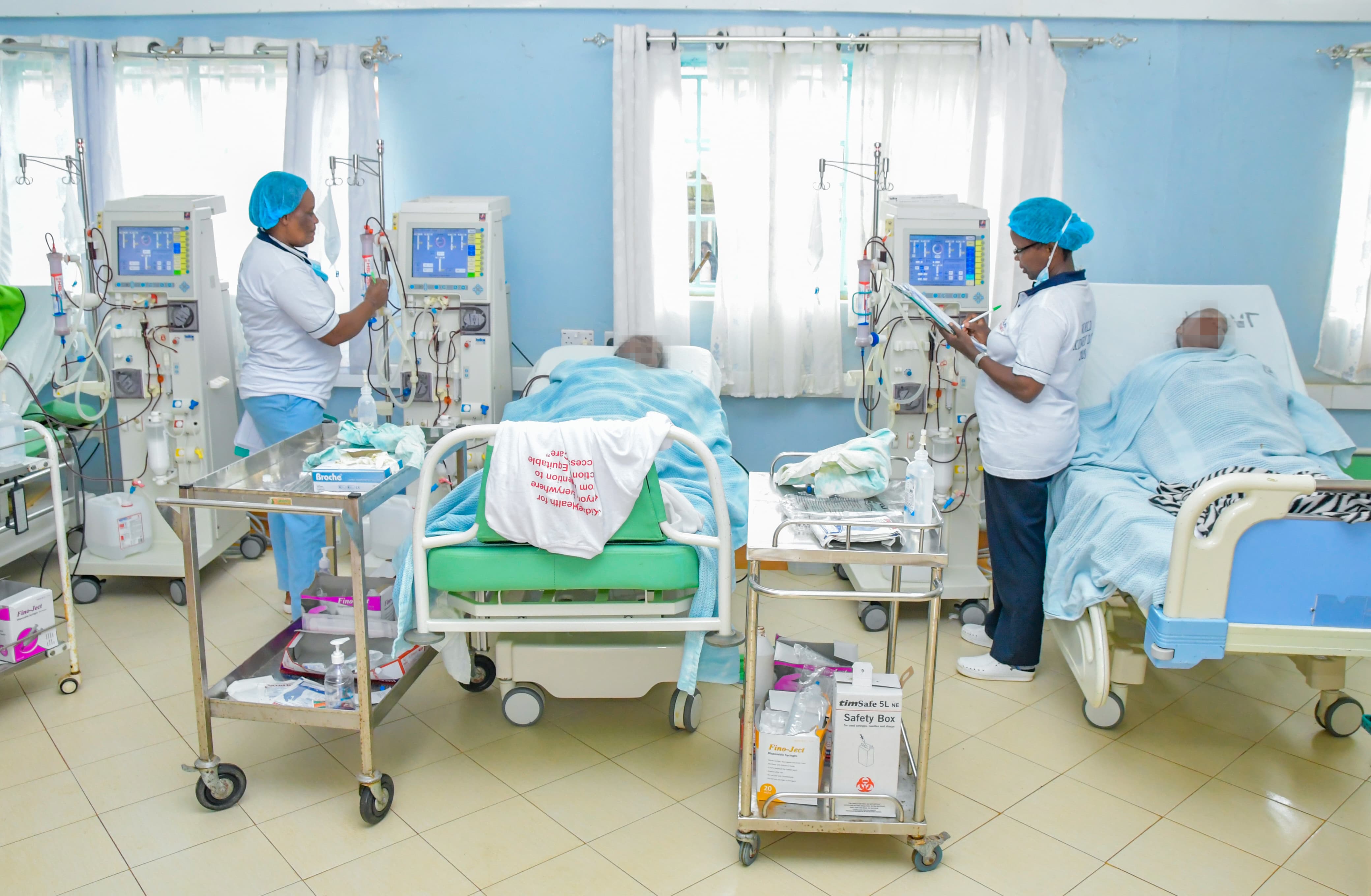 Patients undergoing dialysis at the renal centre at Kerugoya Level Five hospital in Kirinyaga county
Patients undergoing dialysis at the renal centre at Kerugoya Level Five hospital in Kirinyaga county
Kirinyaga government is set to install 25 new dialysis machines to enhance renal care services.
Governor Anne Waiguru said 10 machines will be delivered to Kerugoya County
Referral Hospital this week, while the remaining units will be distributed to
Sagana, Kimbimbi and Kianyaga subcounty hospitals.
The machines are part
of the county’s Intergovernmental Participatory Agreement with the national
government under the National Equipment Service Program (Nesp), which replaced
the previous Managed Equipment Service programme.
“This transition is not just a
replacement but a significant expansion of dialysis capacity that will greatly
improve access to specialised healthcare for our residents,” Waiguru said.
The move follows complaints from dialysis patients about the breakdown of most dialysis machines at Kerugoya County Referral Hospital, the only public renal centre in the county.
The
hospital had eight machines, but over the past five months, six failed, leaving only two.
This limited capacity forced
patients to reduce their treatment hours from about four to two or three hours or seek expensive services from private facilities.
“We sincerely regret the distress
caused by the dialysis challenges at Kerugoya Level 5 Hospital,” the governor
said.
Waiguru said the county received
the eight machines seven years ago under the MES programme, which served
approximately 300 patients monthly. Their current poor condition created a
significant gap in renal care.
Meanwhile, some patients requiring
dialysis have been referred to partner facilities covered by Social Health
Authority to ensure uninterrupted treatment and
protect families from out-of-pocket expenses.
Waiguru said under Nesp,
Kirinyaga has also received modern diagnostic equipment, including a CT scan, a mammogram machine, an ultrasound and digital X-ray machines, which are currently being used at the Kerugoya Referral Hospital.
“We reassure Kirinyaga residents of
our commitment to providing uninterrupted, high-quality and affordable healthcare.
Strengthening our health infrastructure remains central to our development
agenda,” the governor said.
Kirinyaga is among leading
counties with a high prevalence of non-communicable diseases such as
hypertension and diabetes—major causes of kidney failure.
Last year, the county recorded 2,998
new hypertension cases, down from 3,760 in 2023. Health officials estimate more than 80,000 residents live with hypertension, though only about 17,000 are currently
receiving treatment.
During World Hypertension Day
celebrations in May, the county said it allocates Sh83 million annually to
treatment of NCDs, with Sh58 million dedicated to managing
hypertension.
Nationally, about 1.8
million Kenyans suffer from chronic kidney disease, a condition characterised
by gradual loss of kidney function over time.

















